ATI fundamentals, ATI RN Fundamentals Proctored Focus Answered_ Spring 2022
Document Content and Description Below
ATI fundamentals, ATI RN Fundamentals Proctored Focus Q&A_ 2022. what are the health care regulatory agencies: what are the federally funded health care finances: a hospital is conducting a... community blood pressure screening in its lobby. what level of care is this: the intensive care unit, oncology, treatment center and burn center are what level of care: immunizations and education for minimizing risk factors for illness are what level of care: hospital based care in the emergency department or clinical unit are what level of care: specialized care such as burn or cancer centers are what level of care: cardiac rehabilitation and home health care are what levels of care: threatening to put a diaper on a patient if he don't use the urinal properly is considered an: a patient states he is thinking of leaving the hospital against medical advice. the nurse gave him a PRN sedative with his usual meds without him requesting it. this is considered: what would be included in a plan of care for a patient with pertussis: linear clusters of fluid-contsining vesicles with some crusting: a client reports severe sore throat, pain when swallowing and swollen lymph nodes. what stage of infection is this: what are clinical manifestations of localized versus a systemic infection: what actions should be taken to reduce risk of falls: what are actions for a patient who has had a seizure: what is the priority action for a client with a history of falls: what are interventions for seclusion and restraints: assess food, fluids, comfort, and safety and document every 15-30 mins what should be included in a teaching about carbon monoxide poisoning: a client who has a heat stroke will have what: who is at risk for complications from food poisoning: clients as risk for food poisoning are instructed to eat and drink what: what bed position should the bed be in for a client receiving eternal tube feeding due to dysphagia: a client asks to move from the bed to the chair what is the priority action: 21 year old with a sore throat tells doctor he has not seen the doctor since highschool. what screening should be done: what should be included in health promotion and primary prevention for a school-aged child: what is the first sign of maturation in boys: what are the recommended immunizations for adolescents 12-22: scoliosis is more common with who and when should screening be done: what vaccines are appropriate for young adults 20-35: what is an example of a middle aged adults psychosocial development: what are expected decreases in physical function of a middle age adult: glomerular function what immunizations are recommended for a middle aged adult 35-65: what should be asked for a older adult who loses weight: what immunizations are recommended for an older adult 65 and older: what nutritional interventions are recommended for older adults: what are expected changes in aging: a client who is on bed rest should do what to maintain latency of airways: what interventions should be used to reduce the risk of a dvt for a patient post-op: what does a sequential compression device SCD do: what instructions should be given to a client who is recovering from a minor musculoskeletal injury of the left lower extremities: what are effects of immobility of the cardio vascular system: what are the immomobility effects of respiratory system: what strategies should be used during a physical exam: what should be included in a general survey: after inspecting the abdomen what should be done next: what interventions should be used of an older adult during an exam: a 82 year old client in ER has temp of 101, pulse 114, respiration of 22. he is restless and skin is warm.. what actions are appropriate: a client has a low platelet count due to chemo.. what is a priority for measuring vitals: guidelines for measuring respiratory rates: a client has a fractured femur and a BP of 140/94 what action should be done: what directions should be given when testing cranial nerve 5: what are expected findings when assessing the thyroid gland: when assessing an adult ear canal with an otoscope what actions are appropriate: do not touch the ear canal with the speculum use the light to visualize the typmanic membrane on a cone shape what are age related finding when examining the head and neck of an older adult: what are expected findings of an older adult during a breast exam: what are expected findings when asculatating and percussing the thorax: an abdomen assessment shows distension, protrusion at midline, taut skin and no involvement in flanks. what is the cause of distension: what heart sound is the left midclavicular line: what are expected findings when ausculating and percussing the abdomen: what are expected findings when assessing the clients skin: an older adult has tenting of the skin on his forearm. what explains this: what should the nurse examine to assess the patients peripheral vascular system who is post-op knees surgery: what type of lesions are considered vesicles: what findings of a skin assessment require immediate intervention: what are expected findings of a young adult male clients musculoskeletal system: when evaluating a clients neurosensory system, to evaluate stereognosis the nurse should ask the client to close his eyes and identify what: what tests should be performed to test balance: during a Neuro exam what are expected findings with aging: what are actions for a patient who has had a seizure: what is the priority action for a client with a history of falls: what are interventions for seclusion and restraints: what should be included in a teaching about carbon monoxide poisoning: a client who has a heat stroke will have what: who is at risk for complications from food poisoning: clients as risk for food poisoning are instructed to eat and drink what: what bed position should the bed be in for a client receiving eternal tube feeding due to dysphagia: a client asks to move from the bed to the chair what is the priority action: what interventions should be taught for a client who has multiple risk factors for cardiovascular disease: taking courses, reading about bike safety is what kind of prevention: emergency care and surgery is what type of prevention: rehab, learning-self management procedures, strategies are what type of prevention: a client previously stated her chikd is ready to potty train now states that she will post phone the toilet training.. what type of learning domain is this: expected gross motor skills of a 6 month infant: what should the nurse suggest regarding discipline for a toddler: a toddler who says no all the time to the mother trying to help him get dressed is doing what: play activity of toddlers should be: activities for preschoolers should include: what vaccines should be given at the preschool age: play activities for a school-aged child: what should be included in health promotion and primary prevention for a school-aged child: what is the first sign of maturation in boys: what are the recommended immunizations for adolescents 12-22: seasonal influenza scoliosis is more common with who and when should screening be done: what vaccines are appropriate for young adults 20-35: what is an example of a middle aged adults psychosocial development: what are expected decreases in physical function of a middle age adult: what immunizations are recommended for a middle aged adult 35-65: what should be asked for a older adult who loses weight: what immunizations are recommended for an older adult 65 and older: what nutritional interventions are recommended for older adults: what are expected changes in aging: a client who is on bed rest should do what to maintain latency of airways: what interventions should be used to reduce the risk of a dvt for a patient post-op: what does a sequential compression device SCD do: what instructions should be given to a client who is recovering from a minor musculoskeletal injury of the left lower extremities: what are effects of immobility of the cardio vascular system: what are the immomobility of respiratory system: stasis of secretions and decreased and weekend respiratory muscles, atelectasis and hypostatic pneumonia what strategies should be used during a physical exam: what should be included in a general survey: after inspecting the abdomen what should be done next: what interventions should be used of an older adult during an exam: a 82 year old client in ER has temp of 101, pulse 114, respiration of 22. he is restless and skin is warm.. what actions are appropriate: a client has a low platelet count due to chemo.. what is a priority for measuring vitals: guidelines for measuring respiratory rates: a client has a rwctured femur and a BP of 140/94 what action should be done: what are expected findings when assessing the thyroid gland: when assessing an adult ear canal with an horoscope what actions are appropriate: what are age related finding when examining the head and neck of an older adult: what are expected findings of an older adult during a breast exam: what are expected findings when asculatating and percussing the thorax: an abdomen assessment shoes distension, protrusion at midline, taut skin and no involvement in flanks. what is the cause of distension: what heart sound is the left midclavicular line: what are expected findings when ausculating and percussing the abdomen: what are expected findings when assessing the clients skin: an okder adult has tenting of the akin on hia forearm. what explains this: what should the nurse examine to assess the patients peripheral vascular system who is post-op knees surgery: what type of lesions are considered vesicles: what findings of a skin assessment require immediate intervention: what are expected findings of a young adult male clients musculoskeletal system: when evaluating a clients neurosensory system, to evaluate stereognosis the nurse should ask the client to close his eyes and identify what: what tests should be performed to test balance: a helping relationship is established with a client if the communication: in order to facilitate effective communication with a school-age child who is seated do what: what are behaviors of active listening: what are barriers to effective communication: a nurse caring for a client with the same religious background should recognize that: a client scheduled for two physical therapy sessions today. what should the nurse take into consideration for the care of the Muslim client: what are the five stages of grief: what should be included in teaching for a client who is diabetes mellitus about Foot Care: what characteristics should be included when explaining rapid eye movement REM sleep: a client with narcolepsy should do what to help with self management: what is an appropriate intervention for a client who is high risk for aspiration: foods that are low in fiber and easy to digest, dairy products, eggs, custard, yogurt: whole grain such as barley and oats, raw veggies, cabbage, legumes, lentils, black beans are: what are nutritional needs and considerations for older adults: characteristics of anorexia nervosa: characteristics for bulimia nervosa: a nurse ask a client who is come to the ER reporting severe abdominal pain whether he has nausea and vomiting. the nurse is assessing: a client is reporting pain despite analgesia. The nurse can assess the intensity of the Pain by: what are the adverse effects of opioid analgesia: what are expected findings for a client who has had diarrhea for 4 days: what are appropriate steps for the nurse to take when preparing for a cleansing enema: a client reports abdominal cramping during a cleansing enema what should the intervention be: what are appropriate interventions for a client who reports losing control of urine when coughing laughing or sneezing: what are appropriate actions when initiating a bladder training program: a client has amphetamine overdose and sensory overload what intervention should the nurse implement: what are the findings that indicate a sensorineural hearing loss in the left: what medications should alert the nurse for risk of ototoxicity: how to administer ear drops in an adult patient: how long should a medication be administered in within the scheduled time: what are clinical manifestations of infiltration: what is the proper procedures an IV catheter: what are clinical manifestations fluid overload: continuous infusion tubing should be changed how often: intermittent infusion tubing should be changed how often: client receiving an IV reports pain in the arm, chills, not feeling well. Nurse notes warmth, Dima, and duration, red streaking close to IV site what should the nurse: pallor, local swelling and decrease skin temp around the site, damp dressing, slowed rate of infusion is an indication: what should you do if a patient experiences infiltration or extravasation: edema, throbbing, burning, pain at the site, increase skin temp, erythema, red line up the arm , slowed rate of infusion is an indication of: thrombophlebitis what to do if a patient is experiencing phlebitis: how to prevent phlebitis: ecchymosis at IV site indicates: what to do if a patient with an IV has a hematoma: what do you do if a patient experiences fluid overload from an IV: pain, Warmth, edema, induration, red streaking, fever, chills, malaise at IV site: what to do if a patient experience is cellulitis with an IV: involuntary fine motor Tremors, riggity, uncontrollable restlessness, and acute dystonia are: dry mouth, photophobia, urinary retention are: what medications can cause hyperglycemia: what are early indications of hypoxemia: what are appropriate guidelines when performing endotracheal suctioning for a client: what actions should the nurse take when providing tracheostomy care: why is it important to flush the enteral feeding of an NG Tube with internet feedings: what is the highest priority assessment before performing in enteral feeding to a client with an NG Tube: what is the highest priority intervention for a suspected aspiration of a patient on enteral feeding: what are appropriate actions ministering enteral feeding via NG tube in a long-term care facility: what action should be performed before preparing to insert an NG tube for a client who requires gastric decompression: what findings suggest a client with a history of herpes zoster is experiencing post therapetic neuralgia: what should you do during therapy for a patient with MRSA: what is an a typical indication of an infection: what are manifestations of hypovolemia: what lab results indicate a client is developing dehydration: what client is at risk for hypovolemia: what action should be taken in the plan of care for a patient with hypernatremia: manifestations of hypocalcemia: [Show More]
Last updated: 1 year ago
Preview 1 out of 24 pages
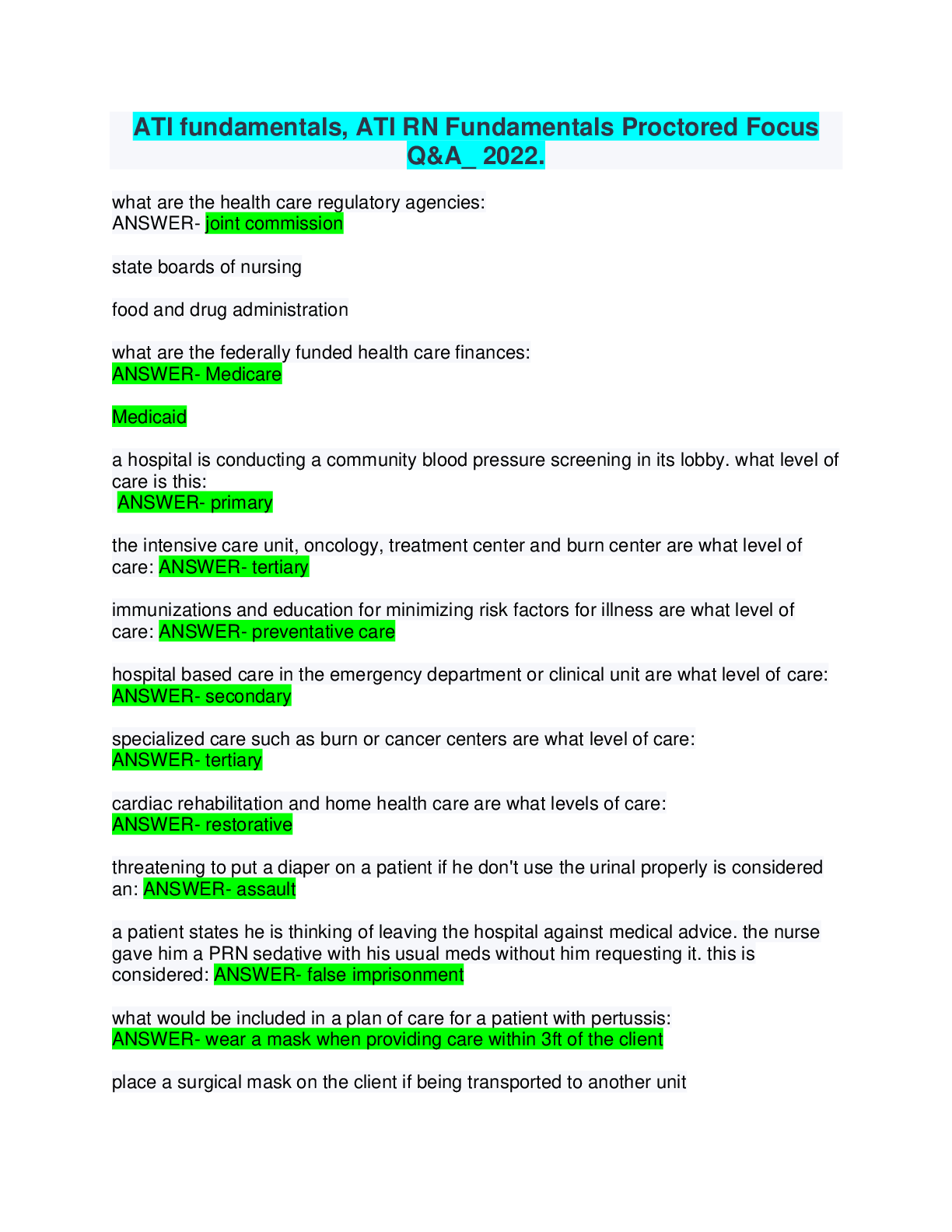
Reviews( 0 )
Document information
Connected school, study & course
About the document
Uploaded On
Apr 18, 2022
Number of pages
24
Written in
Additional information
This document has been written for:
Uploaded
Apr 18, 2022
Downloads
0
Views
92

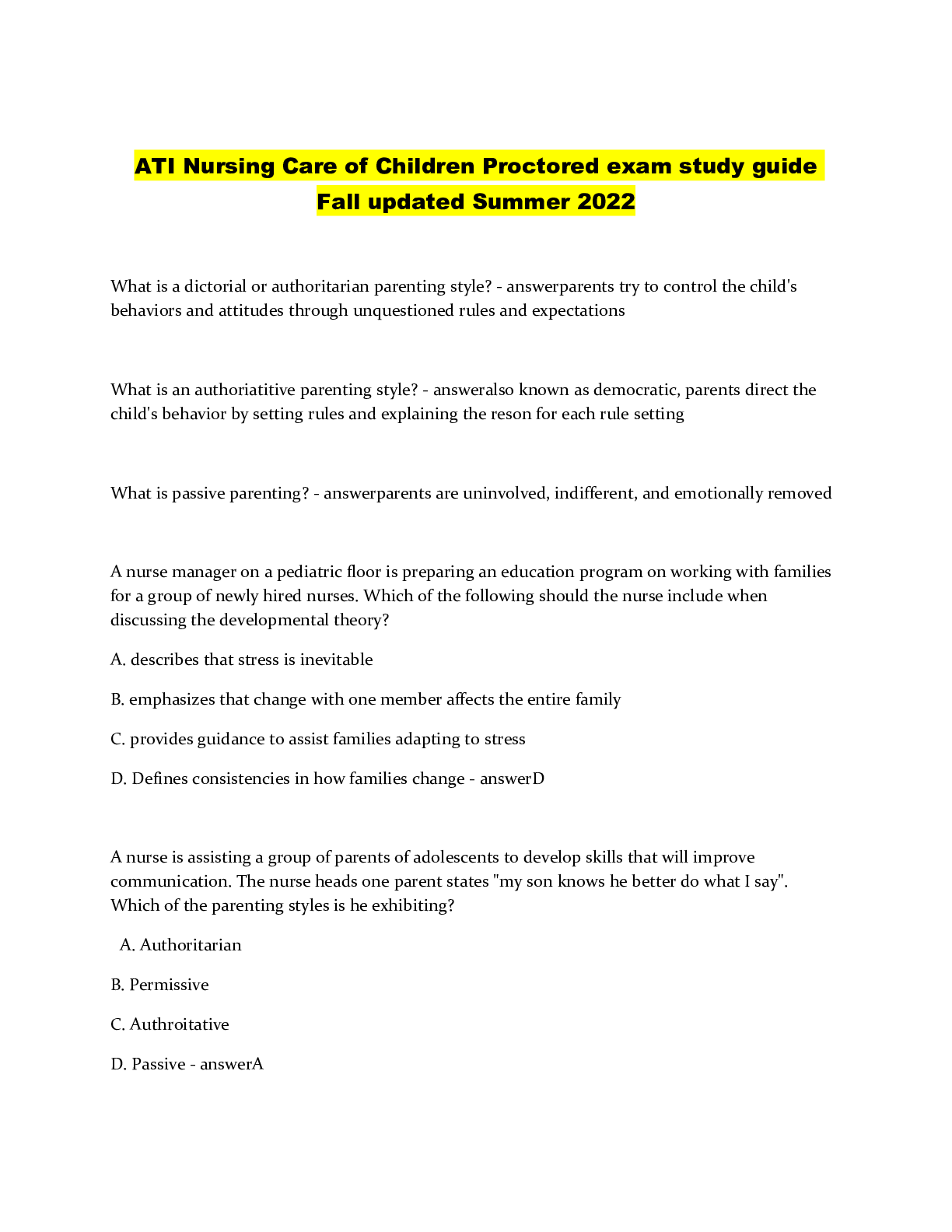

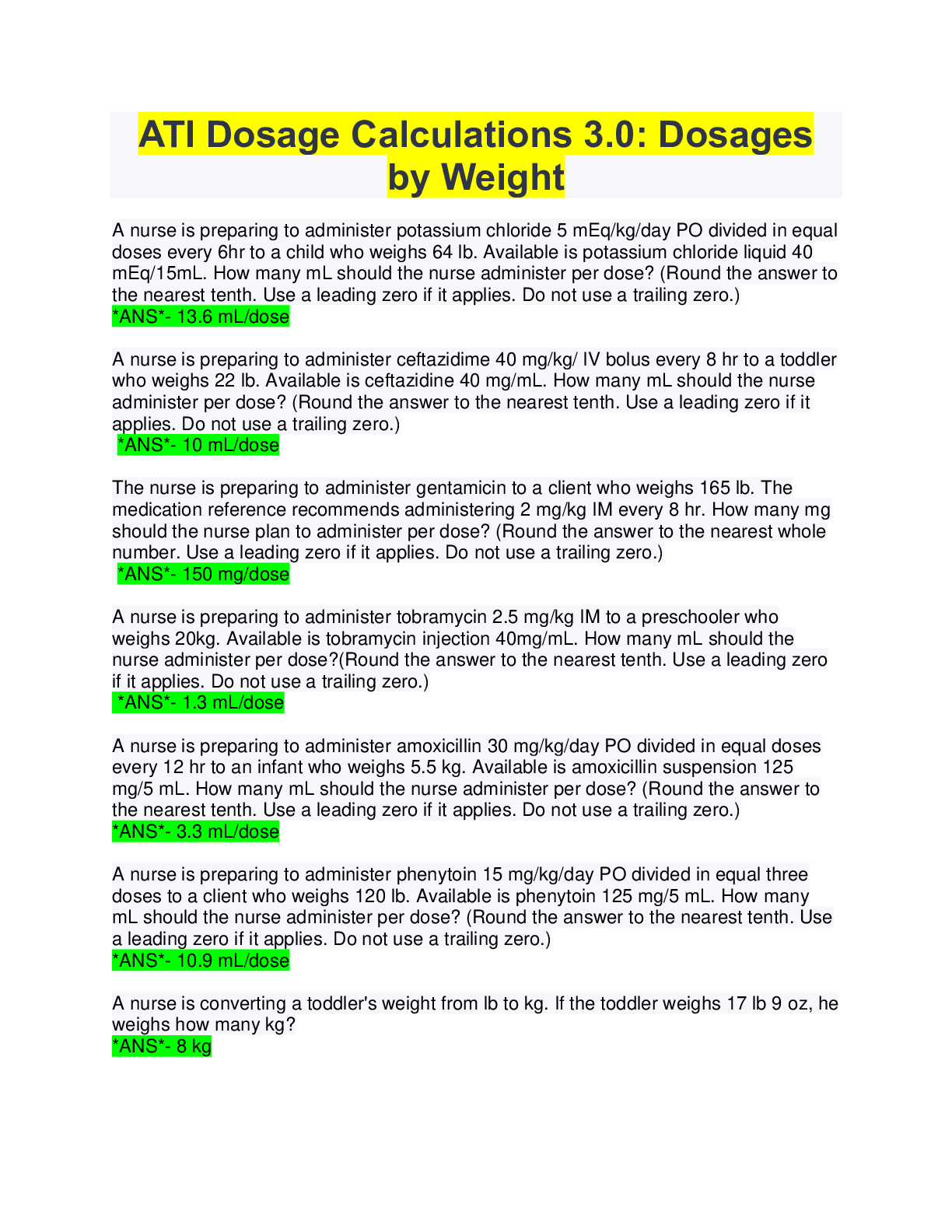
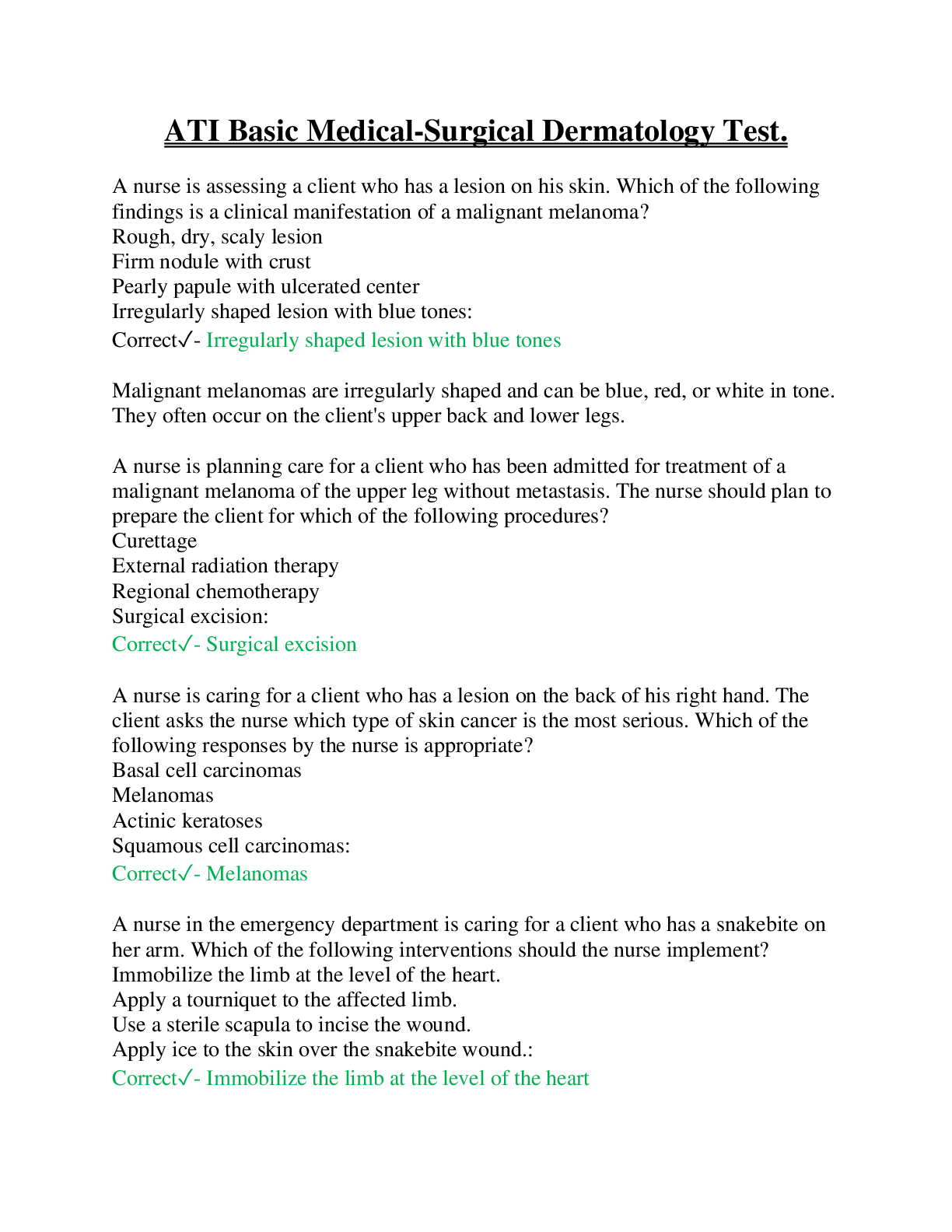

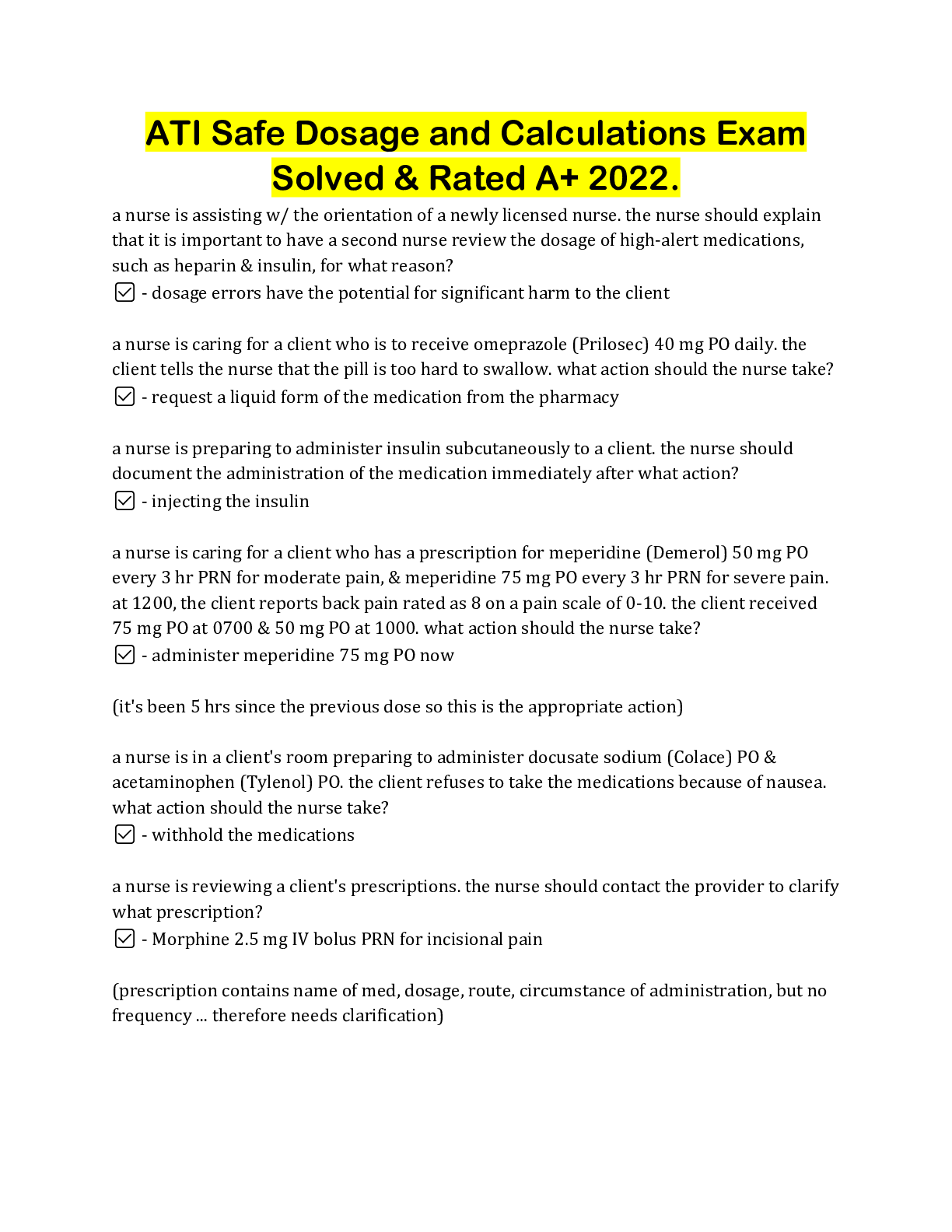
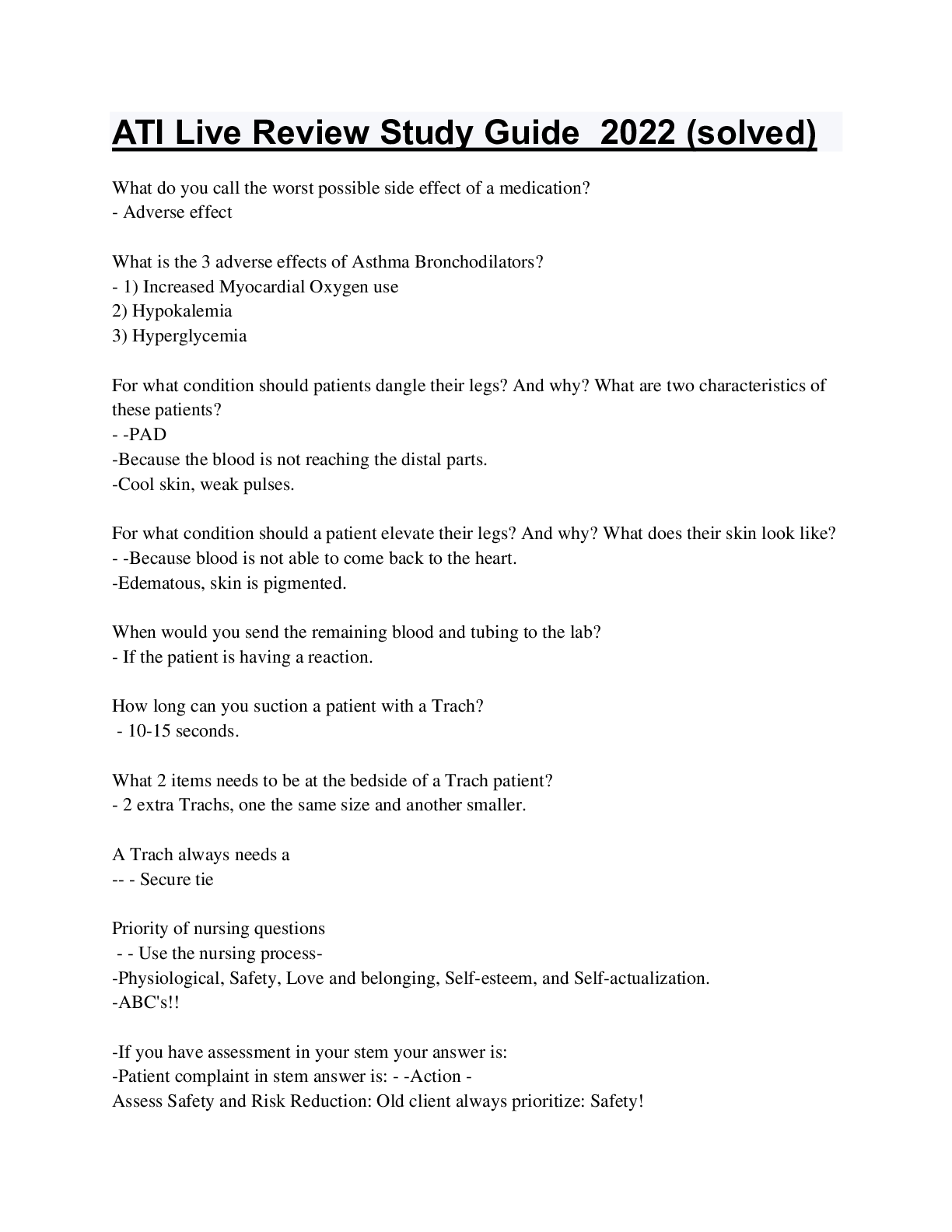

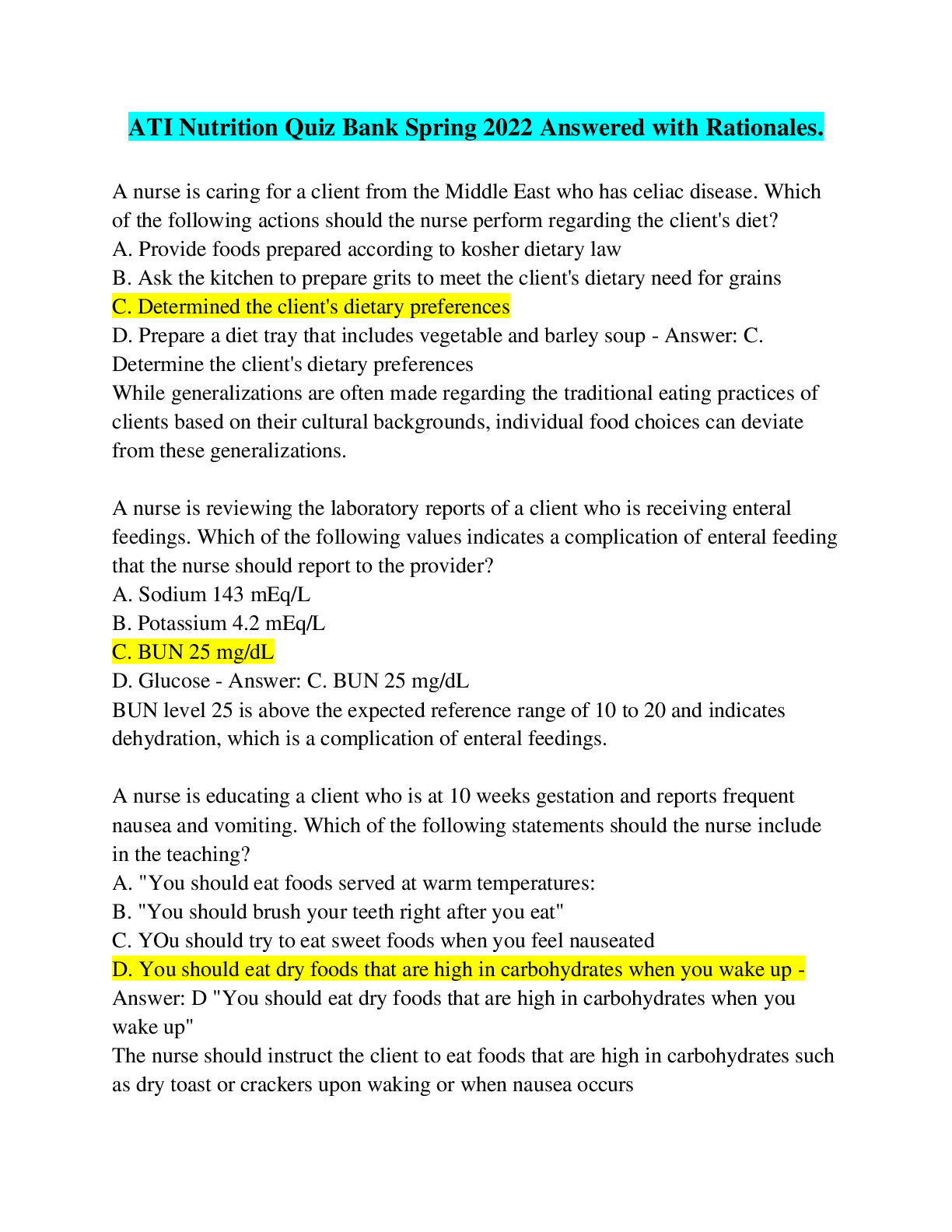
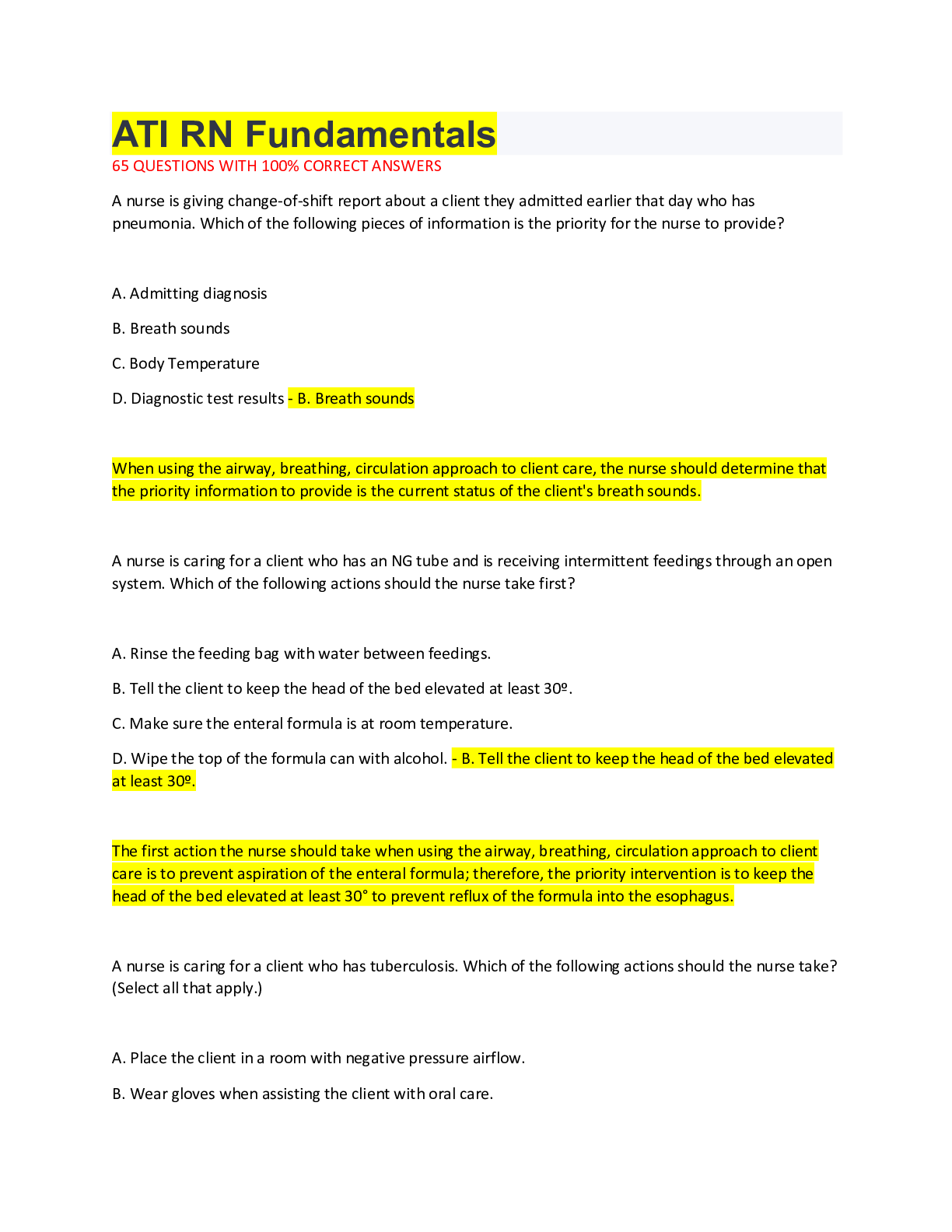
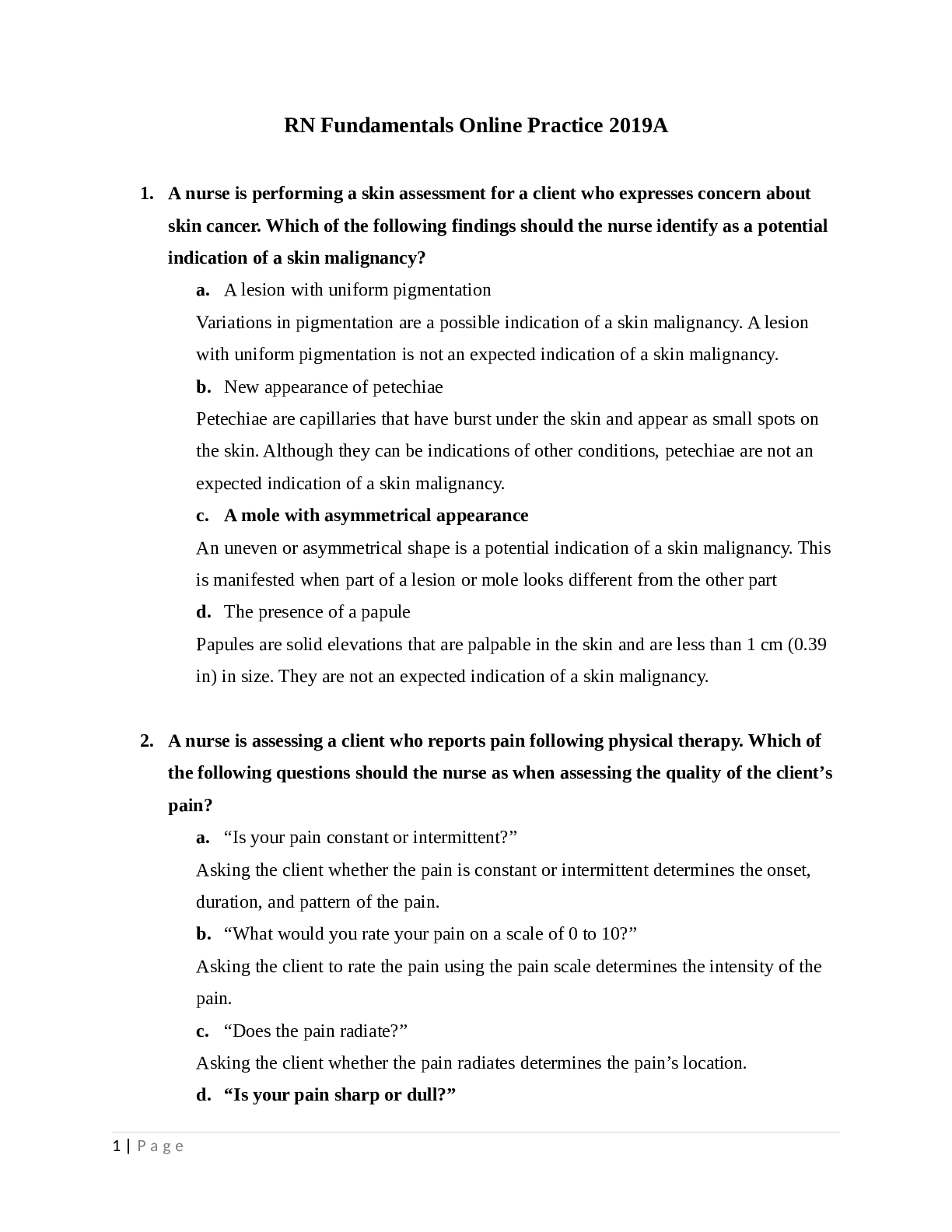
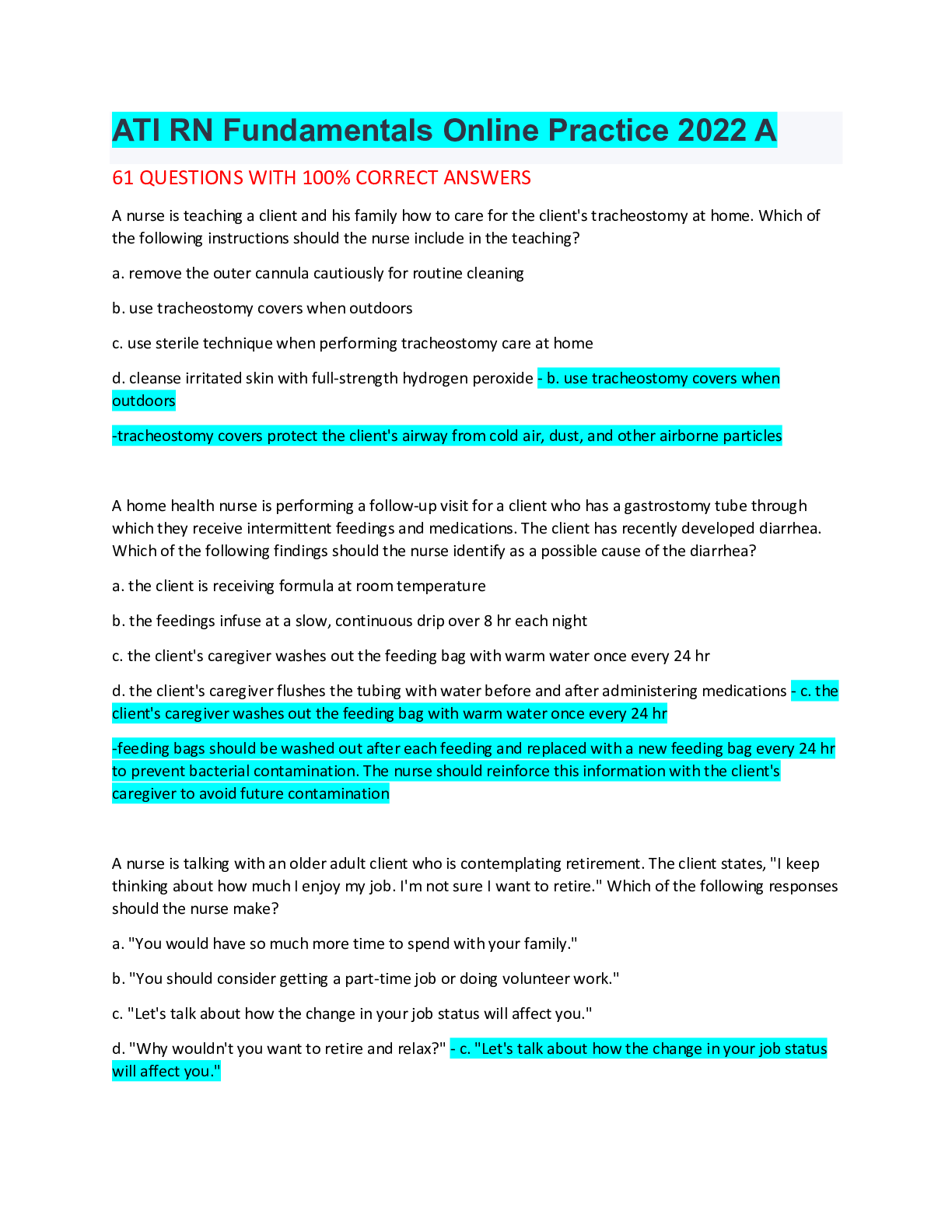
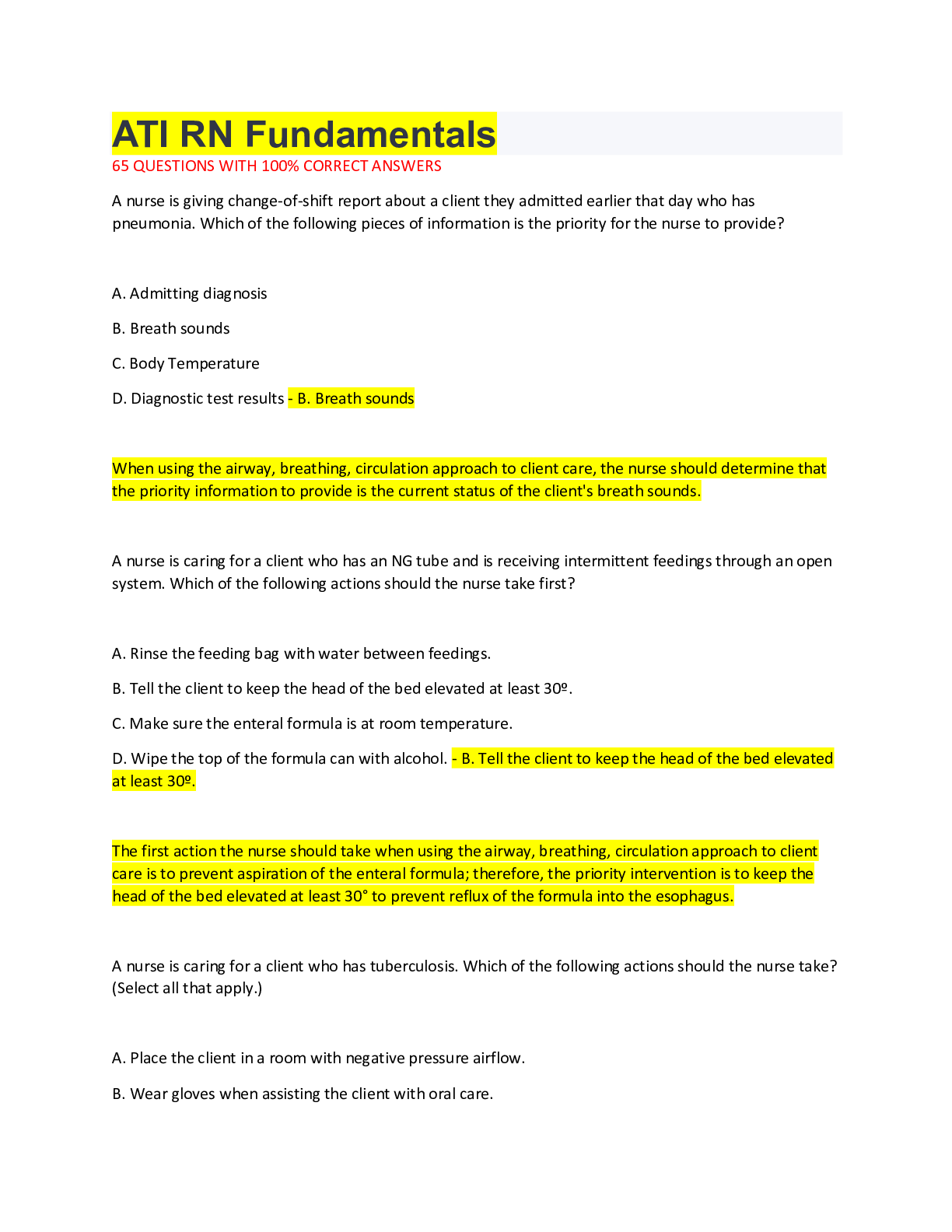
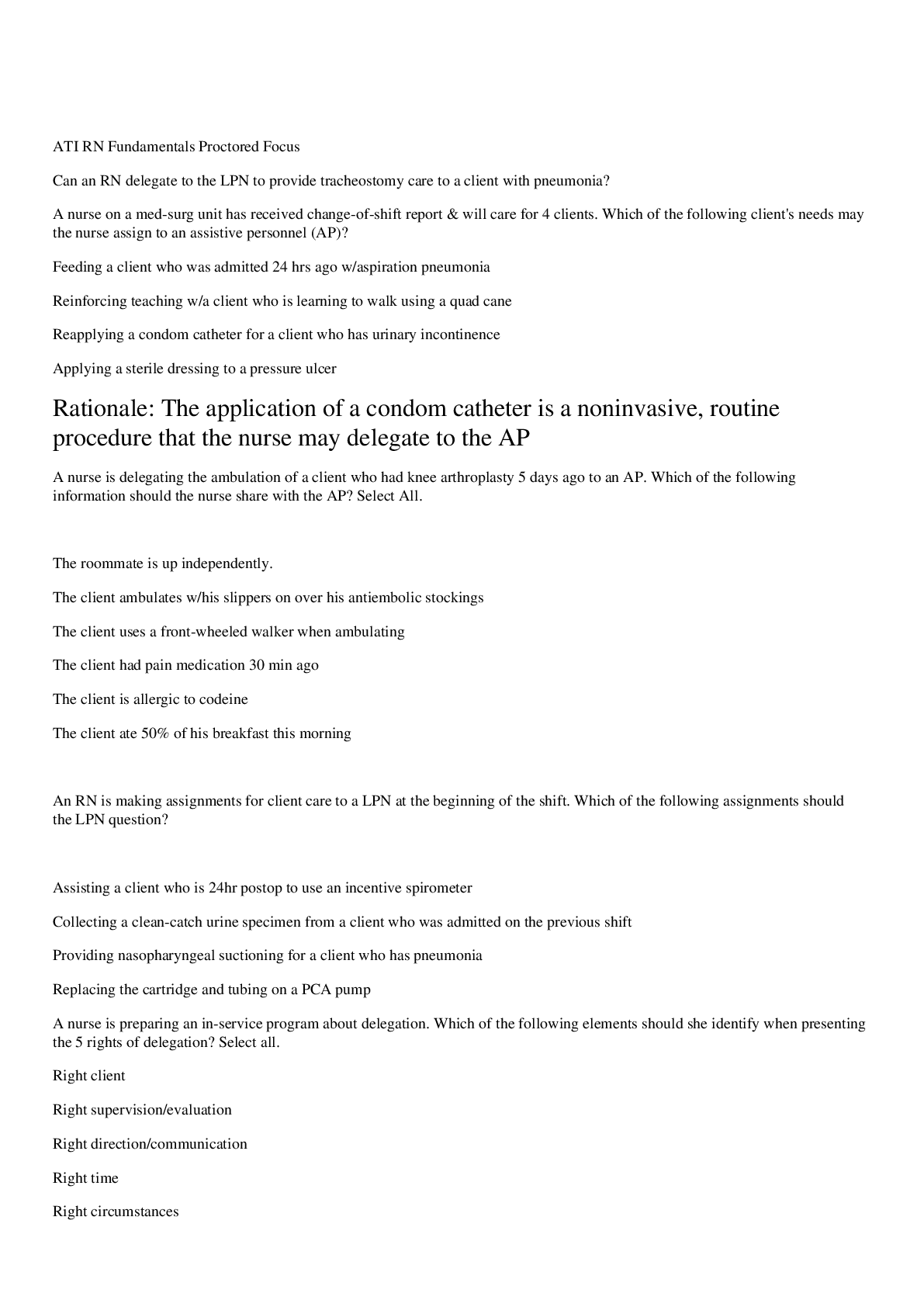
 (1600 + Q & A).png)
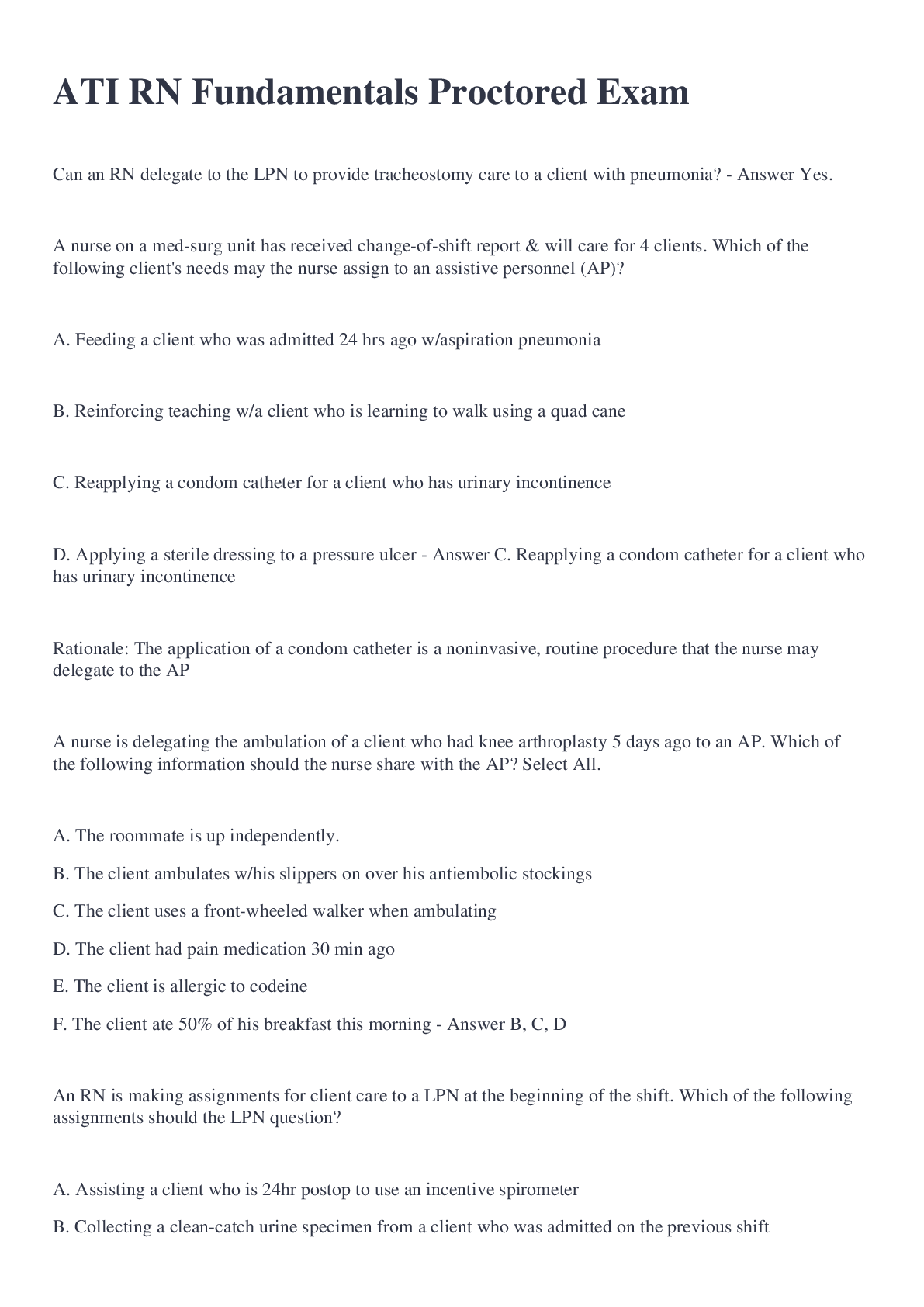
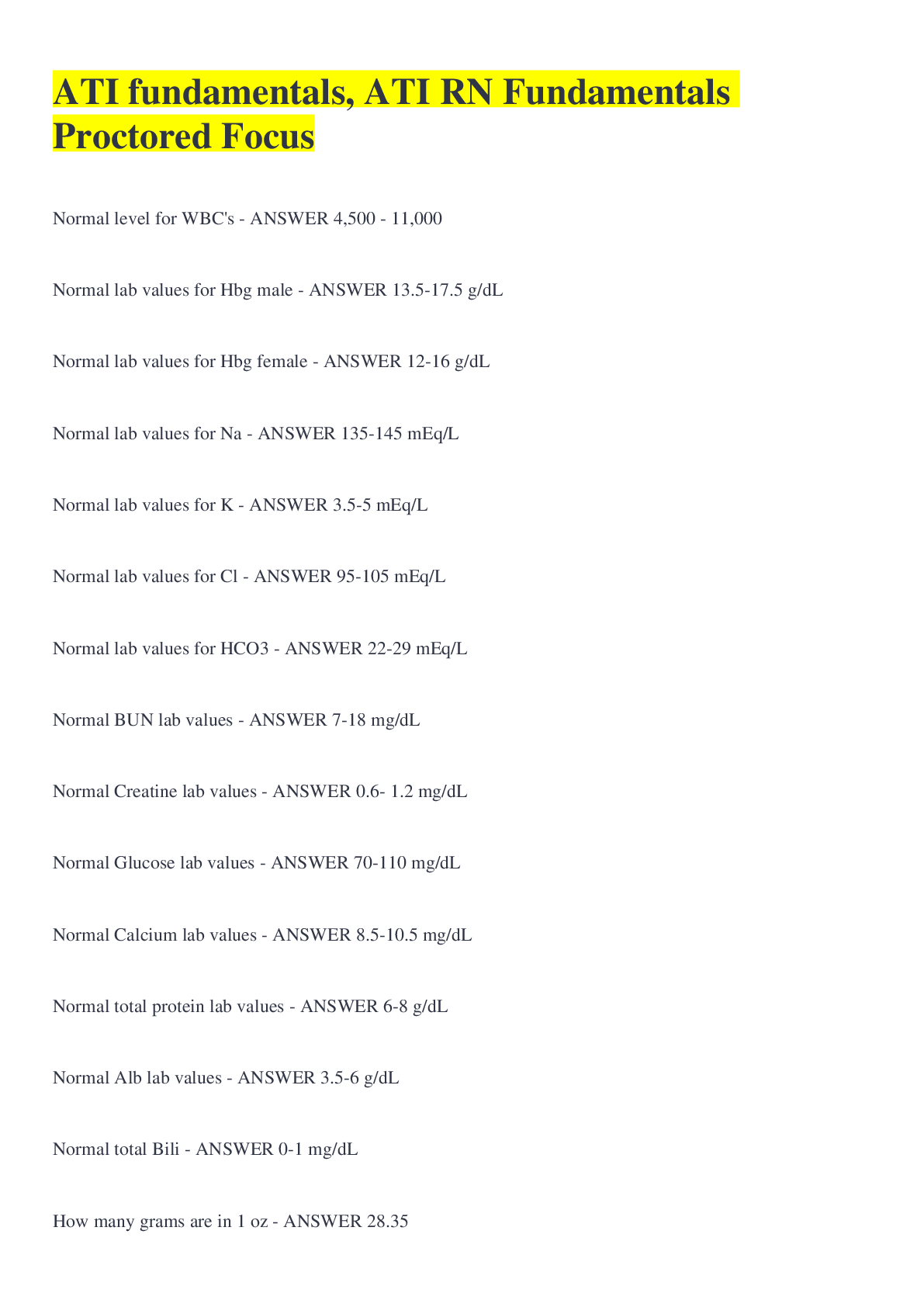
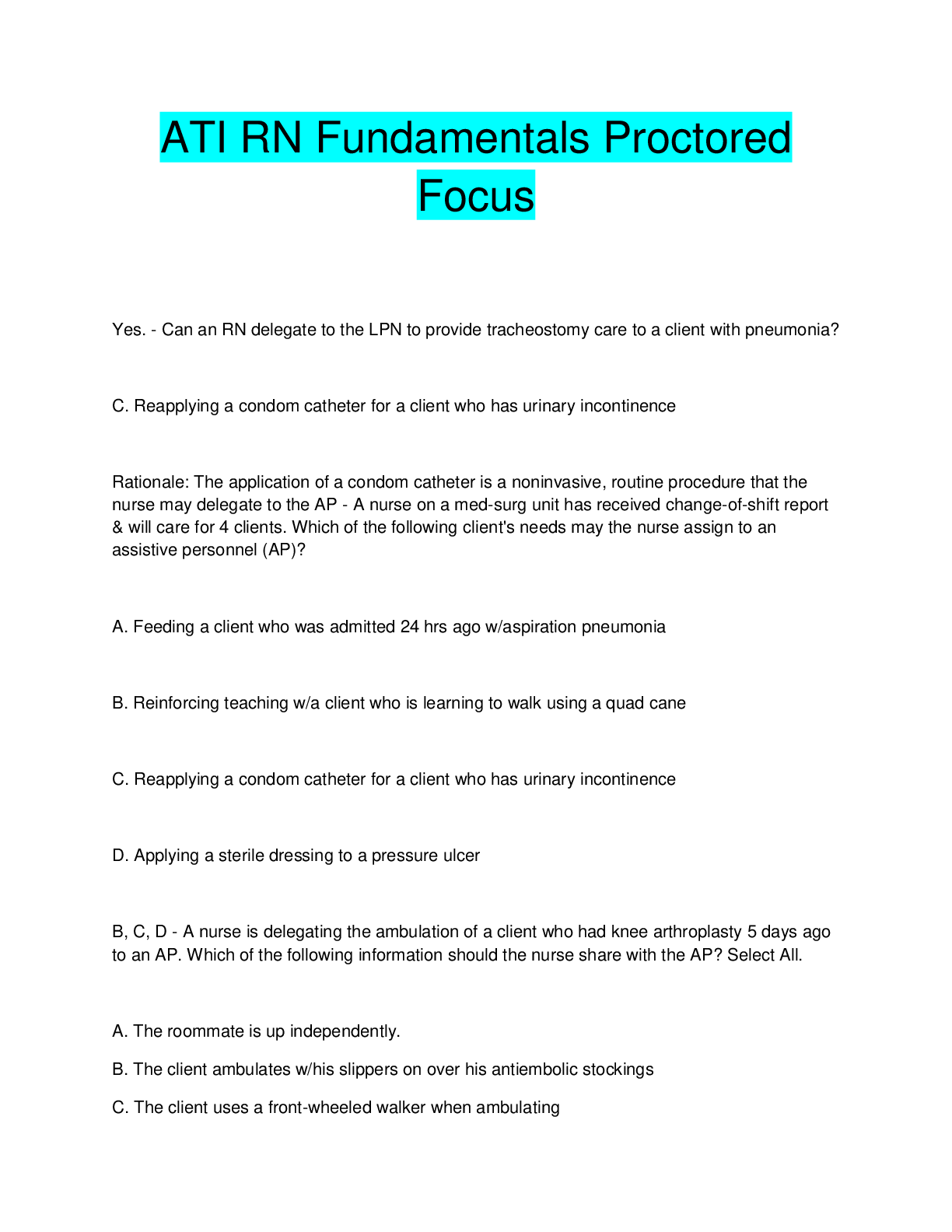
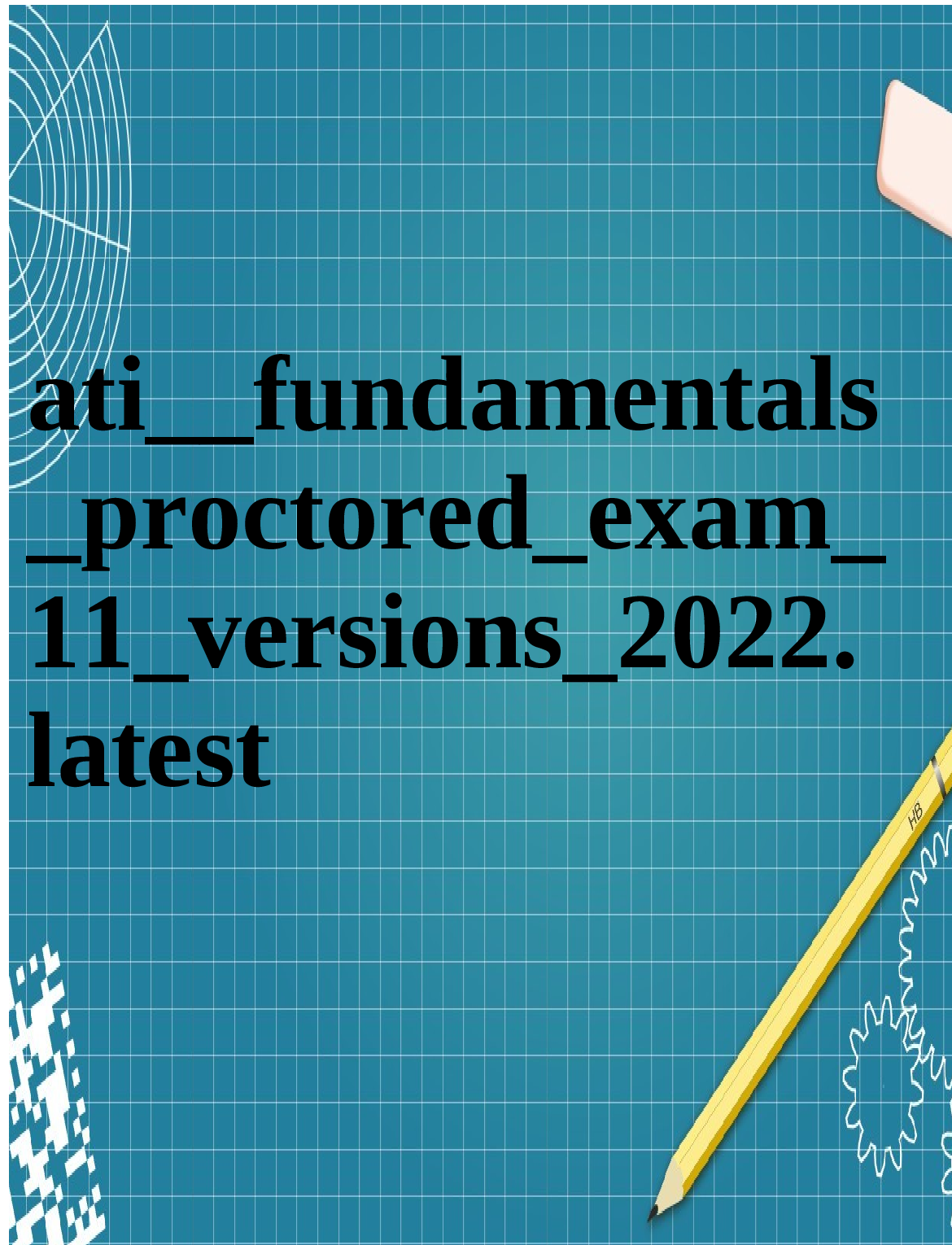
.png)
.png)

